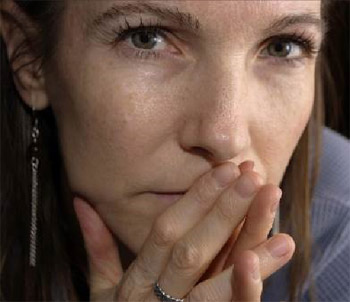Am I Worried, or is this Anxiety?

Am I Worried, or is this Anxiety?
Everyone worries and has anxious feelings at some time in their life. How do you know what is worry or anxiety, and when it is a problem? And how do you learn how to manage anxieties in order to prevent them from affecting your day to day life?
New website Anxiety: think, learn, do - developed by leading women's health organisation, Jean Hailes for Women's Health - is an innovative resource aimed at preventing common mental health problems in women. The website helps women to learn about anxiety, encourages them to think about the things that worry them and make them anxious, and offers practical ways to manage and live with anxiety.
It includes self-assessment and self-management tools, videos with experts, as well as personal podcast stories. The website covers stages of life including young, midlife and older age, as well as particular conditions such as fertility, pregnancy & beyond and chronic illness. Using simple questions, the tool guides women through the stages of anxiety to help them work out if what they are feeling is worry, anxiety or an anxiety disorder.
When you are worried you usually feel troubled or concerned about something. Worry generally doesn't last too long and it doesn't cause fear.
When you are anxious you usually experience nervousness or fear that something bad is about to happen. You experience physical symptoms such as faster breathing, sweaty palms or racing heart but you can usually get on with doing daily tasks and the symptoms calm down.
Anxiety that causes constant physical symptoms, intense fear, distress and affects your day-to-day living, is more likely to be an anxiety disorder. One in three women and one in five men will experience an anxiety disorder over their life-time.
What are the symptoms of anxiety?
Excessive worry that is difficult to control
Increased heart beat
Rapid breathing
Feeling irritable, restless
Fatigue, difficulty concentrating
Muscle tension
Difficulty sleeping
A specific fear of something, e.g. spiders
Avoidance
Causes of worry and anxiety and how you can help
Since time began, to ensure our survival, humans were programmed to feel anxiety to fight against threats (the fight response) or to run away from them (the flight response). This is why you get a racing heart and the blood moves to your muscles to prepare for action. The trouble is, the causes of anxiety are now not necessarily real threats to our life.
Understanding what causes you worry and anxiety and then working out ways to help yourself is a great first step.
Remember...
The most important thing is to face the very things that are causing you to be distressed and know that a certain level of anxiety is part of life. Avoiding situations in case something bad might happen makes you feel better in the short term, but makes anxiety worse in the long term.
If you are in need of urgent psychological help and need to talk to someone straightaway please call Lifeline on 131 114 (24 hours a day, 7 days a week).
For more information on anxiety across the whole of women's lives visit anxiety.jeanhailes.org.au
Published with the permission of Jean Hailes for Women's Health
jeanhailes.org.au
1800 JEAN HAILES (532 642)
MORE
- Dr Linda Swan World Health Day: Depression:...
- Helping To Change Perception Of Suicide And...
- Am I Worried, or is this Anxiety?
- Jack Heath Depression in Australian Workplaces...
- The Importance Of Getting Help For Your Fears...
- Managing Your Fearful And Obsessive Thoughts
- Ending Your Life Is Not The Answer To Your...
- When Your Friends Do Not Understand Your Mental...
- How To Find A Good Mental Health Counselor
- Exercise Effective Remedy For Depression
- Addicted To Being Busy



